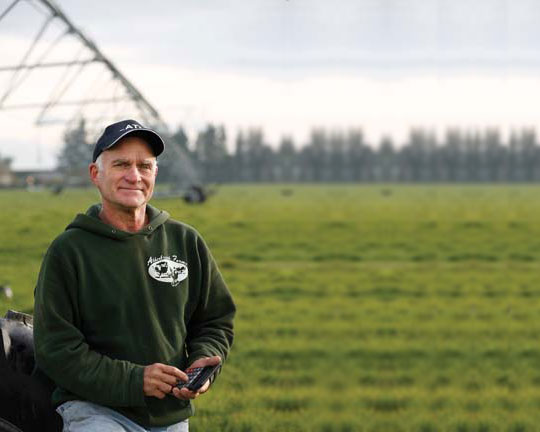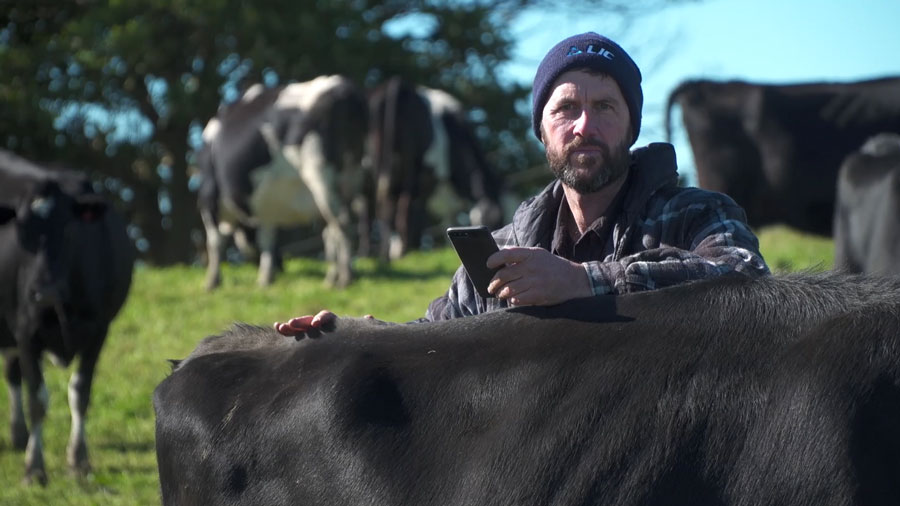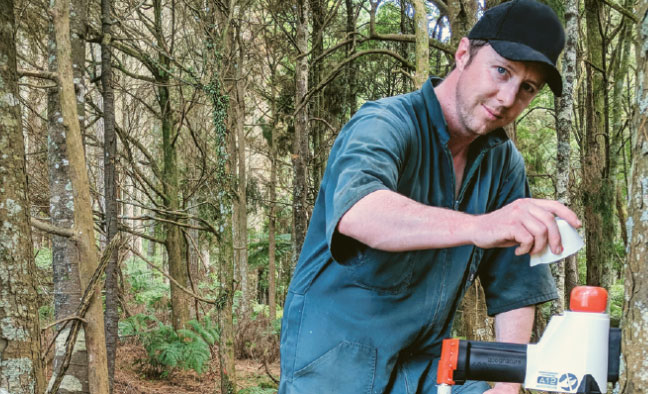5 Tips to Save Time on the Farm
We spoke to five dairy farmers to understand what they considered some top tips that have helped save precious time or work more efficiently on the farm. Two strong themes emerged – invest in the right people and digital tools.
Top tips;
Tip #1 – Work with people you like and trust
Marvin Pangborn, Canterbury Farmer
Farmers may not be able to control the weather, but one thing they can control – and has a big impact on their happiness – is the people they work with. This seems obvious but successful, driven people like to work with people who hold similar values and have a good personality fit.
Marvin Pangborn, a dairy farmer from Rakaia realised just how important personality fit was when he considered succession planning with his son and daughter in mind and looked to a trusted advisor to help. “The first task was finding an appropriate facilitator and then achieve ‘buy in’ from family members. Finding a facilitator whose personality fit with family members was important,” says Marvin. His key criteria was a facilitator with experience to provide a structured approach to succession planning, and someone who had a down to earth personality that fit with his family dynamics. This match extended to the facilitator understanding his family;

“
We started with a personality test on each family member to find out the values of each individual and what was and not so important to each person.
The result was a real understanding of individual goals and how to place the farm at the centre to support these – for the current and future generation.
Marv commented that it took an external trusted advisor to get his children onboard.“Even though I told the kids all of this a hundred times, it was like they suddenly just heard it.”
The result was a successful advisor-family relationship where clear succession goals were set that meet individual and farm needs. This clarity has lead to fast decision making and clear pillars of success which drive the Alderbrook Farm Ltd. strategy today, for the future.
If you are interested to learn more about Marvin’s succession planning strategy working with a facilitator you can find his presentation online “The Evolution of Succession and Governance for a NZ Dairy Business.”
Tip #2 – Make evidence-based decisions over instinct
Peter Morgan, Waikato Farmer
Pete from Te Awamutu, suggests that perhaps only “40% of his best farming decisions are driven by instincts alone.”
“It’s so empowering – as I’ve learnt that most of my knee-jerk reactions in the past were actually wrong because they were based on what was apparent in front of me whereas the reality can be quite different,” says Pete.
With the volume of information available today, Pete saves time and gets staff and equity partners on the same page by using Agrigate. They check the key performance indicators that drive decisions every couple of days.
“
The decisions don’t get more important than right now as the decisions and actions we make now decide the success or not of next season.
Educating staff is important to Pete, “I don’t want them to just take my decisions on faith but ask why – and have the skill to line up information so they trust their own ability to make decisions and back them.”

Deciding to dry off early was one of these controversial decisions that Pete made through reviewing data. Pete noted,“It looks like a drastic step as my cows don’t look too bad and we’ve got some really nice grass growing. But when key information is lined up like low soil moisture levels, low growth rates and low cow body condition scores the evidence supports it.”
Tip #3 – The power of connectivity on-farm
Elizabeth Chick, Canterbury Farmer
“
I don’t know where we would be farming without phones.
Liz credits working more efficiently to the WiFi installed in both cow sheds, enabling her team to always be connected and make good use of their time. Even using WhatsApp groups to communicate with staff so they all have the same information has been a really simple but efficient way of her team working.
“Using group messaging, everyone is on the same page, for example notifying the team of hazards has been easy and effective.’ And while they are lucky to get good reception, she didn’t want staff to have to rely on their own data, which encouraged them to provide WiFi where they could.
Being connected on-farm came in very handy for her staff early one morning when they noticed a cow in bloat and no-one else was available to help at the time.
“They knew they needed to release the bloat urgently, but were not sure of the technique.” Sure enough, a quick online search and some well informed YouTube videos later, they had all the information they needed while still in the field. “The outcome was a success and the cow survived, so they did really well” says Liz.
Liz also stays connected to the important information when she’s not on the farm and finds her phone apps a great way to check in remotely, for example using Farm Source or MINDA, even when travelling. Agrigate is one of the systems she uses to get a consolidated view of what’s most important on-the-go.
Tip #4 – Automate repetitive activities using technology
Simon Cotter, Hunua Ranges Farmer
For a little family farm tucked into one of the valleys at the base of the Hunua Ranges Simon Cotter gets a lot done working as a one man band. He credits this to his use of technology on farm, a fascination turned hobby that has transformed his 200+ cow dairy farm into a micro technology hub compared to most farm standards.
“
For over two years now I have been using a drone to get the cows in for milking both morning and afternoon. With the help of a solar-powered automatic gate release timer opening the gate, I am able to launch the drone from the house or cowshed to round up any stragglers and bring the herd all the way up to the cowshed
And while there is no way around an early start, Simon even manages this as effectively as possible through smart technology. “I have kitted out the full house with Smart Bulbs to slowly fade the lights on in the morning to emulate sun rise acting as my alarm, providing a more natural wake up.”
Other ways technology has helped is by using a connection of smart home weather stations which provide quality micro climate information not available over regular channels – something that Simon has found especially valuable living in an area with such unique weather patterns. His house is intruder proof (encouraged after an actual break-in) with finger scans on the doors and camera’s operating inside and out 24-7, including the cow-shed, that can be viewed on his smartphone anywhere on the farm.

Technology even expands to pest protection where GoodNature traps provide an automatic and humane way to be rid of pests, with no poison or harm to protected species, while protecting the local fauna – an issue Simon is passionate about promoting, especially giving his close enclosure with surrounding native bush.
It’s safe to say on-farm technology is proving an efficient and time saving tool, though Simon knows ‘things can always be made better’ and will keep up to date with what’s emerging to help his farm and lifestyle.
Tip #5 – Use a specialist payroll tool for good people management
Andrew Hoggard, Central Districts Farmer
Andrew Hoggard, a dairy farmer from Central Districts recalls the pain a few years ago of using paper to calculate pay, roster staff and record payroll.
“It was a bloody mission and inaccurate at best. Not to mention the piles of paperwork that were likely half illegible given the cow dung on the pages.,” says Andrew. It’s no wonder the fear of the labour inspector ‘popping in’ for a visit was real with a high likelihood of fines from not being compliant.
Thankfully, with solutions like PaySauce, there are better options for managing people and payroll that save impressive amounts of time in a week.
Andrew’s staff use the PaySauce app to record their hours worked, request leave and check leave balances. Then it’s a quick weekly job for Andrew to double check the payroll numbers look accurate and push ‘go’, knowing that all of the required ‘paperwork’ is taken care of.
“
It just takes the work away, there are no calculations involved, no need to figure out hours, minimum wage, and manually pay employees – it’s simple and seamless.
So simple in fact that farmers using good online payroll systems likely don’t even consider them anymore as the tasks are largely automated. The next smart step is to marry payroll data up with farm performance to provide greater insights – something Agrigate and PaySauce are well underway to achieve.
“The ability to see trends in milk production per day vs which staff were working would be interesting” say Andrew. And while we aren’t providing that level of detail just yet, the vision of aggregating data to provide better performance insights is exactly what Agrigate aims for.
If you are looking for a farm specific payroll solution, find out find more about PaySauce.
